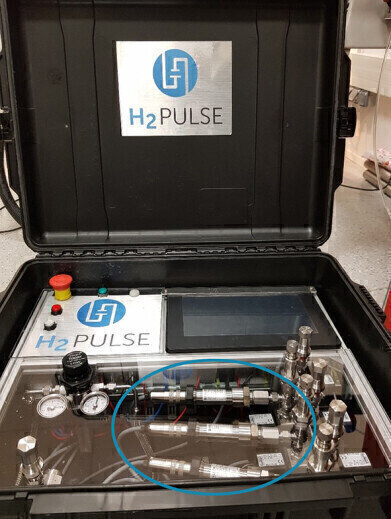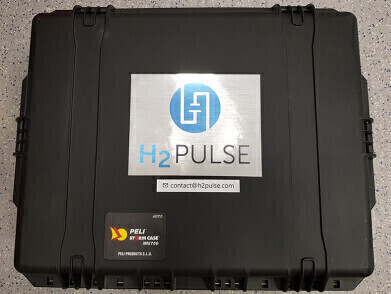Water/Wastewater
Portable, precise and dependable leak-tightness testing system for hydrogen fuel cells
Sep 06 2023
It is widely anticipated that hydrogen, used as an energy carrier, will play a significant role in the energy transition which will reduce our use of fossil fuels. For example, it can store excess renewable energy generated by solar panels or wind turbines. Electric batteries produce waste and lose storage capacity over time; hydrogen tanks, on the other hand, are much better suited for storing large amounts of energy, while producing zero waste.
Hydrogen, stored in these tanks, can be converted back into electricity via a fuel cell system. Electricity, heat and water are produced when hydrogen bonds with oxygen in the air, all without creating any carbon dioxide emissions. The converted electricity can then be utilised as a power source for a wide range of applications, from stationary and industrial equipment to mobile appliances. Fuel cell systems are now a major part of the energy chain and they will only grow in importance over the coming years. Hydrogen is Earth’s smallest molecule; it permeates almost anything and is highly flammable when in contact with air. It is therefore crucial to prevent hydrogen tanks from leaking and to discover any such leaks as early as possible.
H2PULSE recently developed a high-precision, portable leak detection system for fuel cell systems. This system works on a simple principle; the fuel cell being tested is attached to the leak detection system via a standard plug-in connector. Hydrogen fuel cells have three channels: one for air/oxygen, one for hydrogen and a cooling channel. Each channel is connected individually to the H2PULSE system.
When the fuel cell is not operational, a gas flow is connected to the fluidic chain that feeds the three channels. The tests are performed independently of one another, first using nitrogen, and then hydrogen, to detect any leaks in the system. The cooling channel’s sole purpose is to cool the fuel cells, which heat up during operation.
KELLER’s 33X and 21Y pressure sensors measure pressure at the fuel cell inlet and outlet. The measurements are recorded on a regular basis throughout the process and are displayed on-screen in real-time, to enable and ensure continuous monitoring. A reduction in pressure would indicate that there is a leak in one of the three flow channels. The high level of precision of KELLER’s pressure transmitters enables operators to detect leakages in the smallest non-leak-tight areas, thus ensuring that fuel cells remain safe to use.
Digital Edition
AET 28.2 April/May 2024
May 2024
Business News - Teledyne Marine expands with the acquisition of Valeport - Signal partners with gas analysis experts in Korea Air Monitoring - Continuous Fine Particulate Emission Monitor...
View all digital editions
Events
Jul 30 2024 Jakarta, Indonesia
China Energy Summit & Exhibition
Jul 31 2024 Beijing, China
2024 Beijing International Coal & Mining Exhibition
Aug 07 2024 Beijing, China
IWA World Water Congress & Exhibition
Aug 11 2024 Toronto, Canada
Aug 25 2024 Stockholm, Sweden and online










.jpg)








